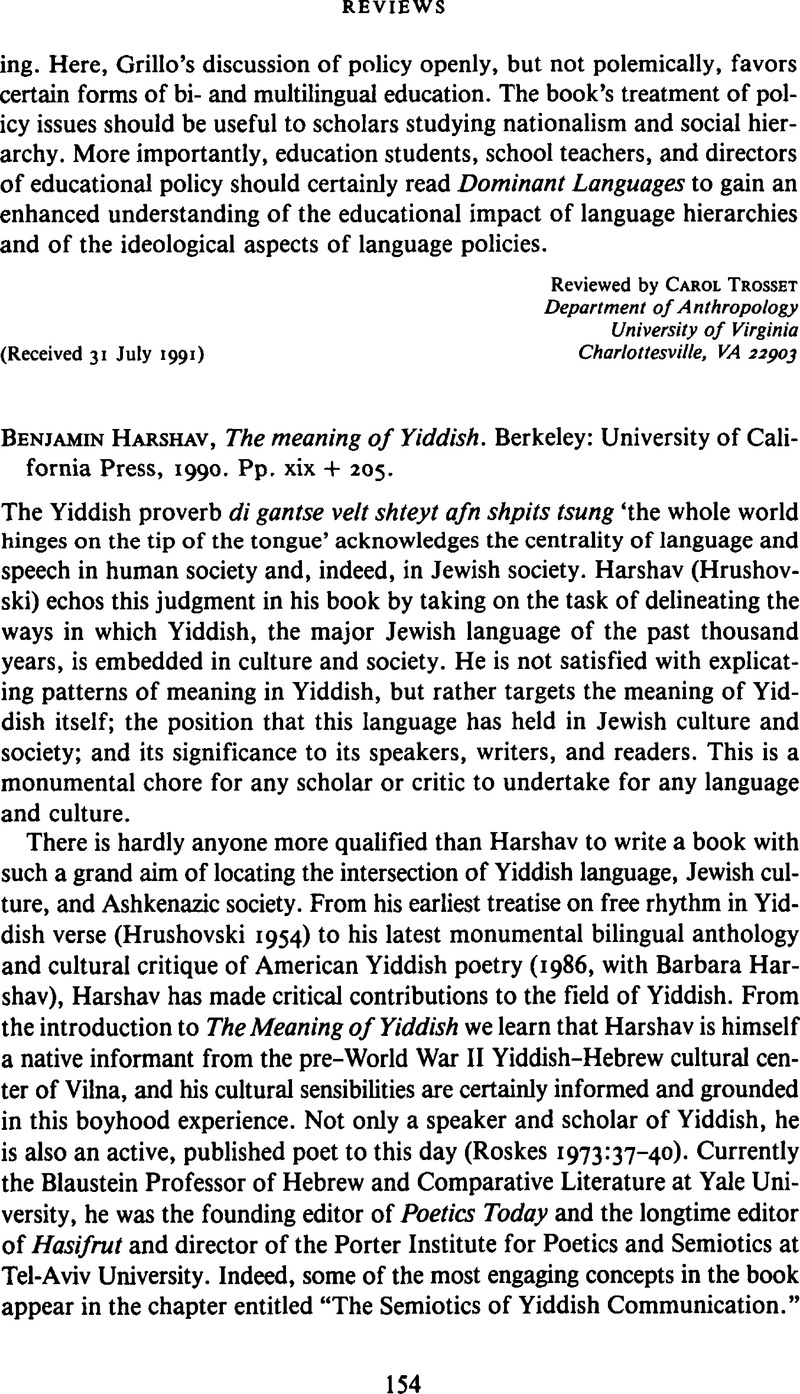No CrossRef data available.
Article contents
Benjamin Harshav, The meaning of Yiddish. Berkeley: University of California Press, 1990. Pp. xix + 205.
Published online by Cambridge University Press: 18 December 2008
Abstract
An abstract is not available for this content so a preview has been provided. Please use the Get access link above for information on how to access this content.

- Type
- Book Review
- Information
- Copyright
- Copyright © Cambridge University Press 1992
References
REFERENCES
Dorian, N. C. (ed.) (1989). Investigating obsolescence: Studies in language contraction and death. Cambridge: Cambridge University Press.CrossRefGoogle Scholar
Fishman, J. A. (1981). The sociology of Yiddish: A foreword. In Fishman, J. A. (ed.), Never say die!: A thousand years of Yiddish in Jewish life and letters. The Hague: Mouton. 1–97.CrossRefGoogle Scholar
Harshav, B., & Harshav, B. (1986). American Yiddish poetry: A bilingual anthology. Berkeley: University of California Press.CrossRefGoogle Scholar
Hrushovski, B. (1954). On free rhythms in Yiddish poetry. In Weinreich, U. (ed.), The field of Yiddish, Vol. 1. New York: Linguistic Circle of New York. 219–66.Google Scholar
Miron, D. (1973). A traveler disguised: The rise of modern Yiddish fiction in the nineteenth century. New York: Schocken.Google Scholar
Roskies, D. G. (1984). Against the apocalypse: Responses to catastrophe in modern Jewish culture. Cambridge, MA: Harvard University Press.Google Scholar




